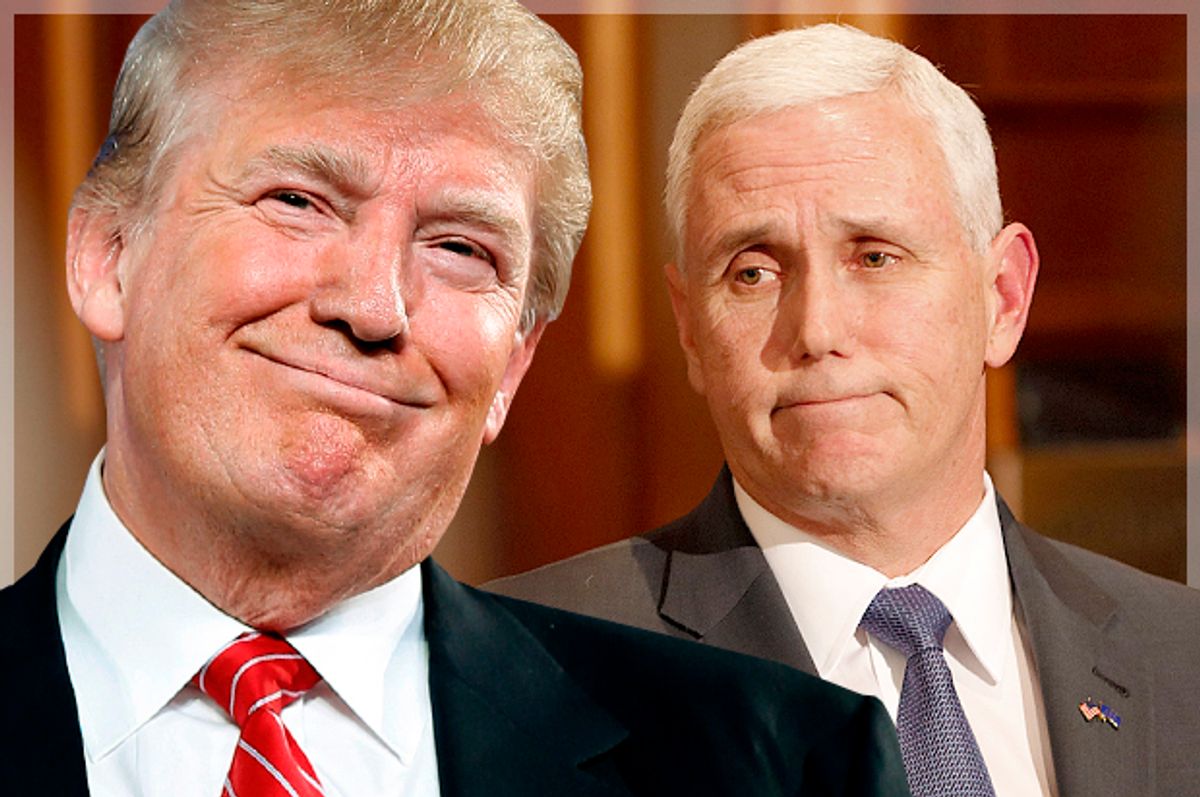Donald Trump was initially hesitant to use the phrase “drain the swamp.” But as he explained to a raucous crowd in Las Vegas shortly before the election, he changed his mind when he saw his supporters’ reaction.
“I said it, and the place went crazy. Then I said it a second time and the place went even crazier. And then the third time, like you, they started saying it before I said it. And all of a sudden, I decided I love that expression. It’s a great expression!”
When he debuted the expression during his campaign, Trump released an ethics reform plan that focused on cracking down on federal lobbyists. But it quickly became evident that he never fully bought into the idea.
Within a few days of his upset victory, Trump had brought more than a dozen lobbyists into key positions on his transition team, outsourcing the creation of his new government to the swamp dwellers themselves.
The thinly staffed Trump government that has emerged since then is full of lobbyists, including at least three dozen who had recently lobbied on issues of direct relevance to their new government posts.
Trump’s staffing practices are a textbook example of the “revolving door” phenomenon, in which Washington insiders hop from high-paying D.C. influence jobs to government positions – collecting expertise and connections to prepare for their next spin.
A new Public Citizen report looks at the other half of the revolving door equation: cashing in.
We identified more than 40 individuals with close ties Trump or Vice President Mike Pence who have worked as lobbyists this year, trading on their relationships to the White House. These lobbyists are included on billings and reported in-house lobbying expenditures of more than $40 million.
For example, Brian Ballard, who previously lobbied for the Trump Organization in Florida, opened a Washington office after Trump’s election. In the first half of 2017, Ballard signed more than 40 clients and brought in more than $5 million. Robert Grand, a longtime Pence fundraiser, had not signed a new lobbying client since 2013. This year, he has signed 17.
More than half of the lobbyists identified worked on the transition, which was tasked with the highly influential role of recommending appointees and policies for the new administration.
About a week after the election, roiled by headlines over the influx of lobbyists, the Trump transition team issued rules requiring any lobbyists who wanted to stay on to sever their client relationships. At least five transition team members indicated on lobbying disclosure forms that they were “no longer expected” to work as lobbyists for their clients. All five ended up lobbying for at least some of the same clients in the first half of 2017, blatantly ignoring their earlier promises.
The transition team’s ethics rules also supposedly prohibited members from lobbying for six months on issues they worked on during the transition. That rule didn’t appear to mean much, either.
Consider Nova Daly, a lobbyist who worked on trade issues for the transition. He returned to his clients in the first quarter of 2017 and disclosed lobbying on the North American Free Trade Agreement, “import surges,” “Buy America” provisions and “issues relating to trade restrictions,” among other issues. Those sound like the sort of trade issues he would have been working on during the transition.
Daly said that he did not break the ethics agreement because he did not lobby the executive branch. That was an inaccurate reading of the agreement, but at least Daly acknowledged that there was an agreement to break. At least four people who jumped from the transition team or administration to K Street said that they never signed the ethics pledges, or that the rules for some reason did not apply to them.
Trump was right. The crowd did go crazy when he promised to drain the swamp. That was probably because they were infuriated with people in Washington rigging the system for themselves, ignoring the rules and breaking promises.
What would they say now?



Shares